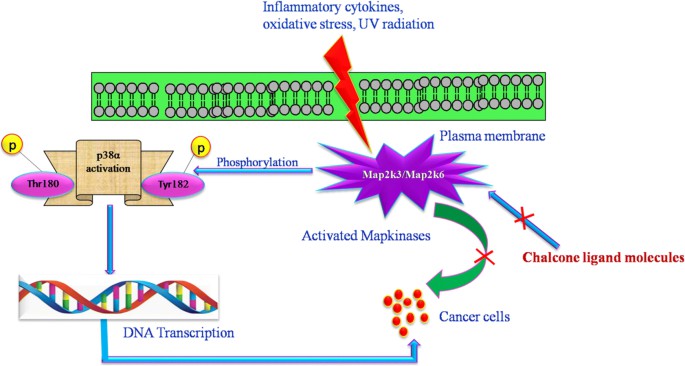What is MAP2K3 Protein?
The MAP2K3 (Mitogen-Activated Protein Kinase Kinase 3) protein is a highly critical component of mammalian cells because of its key roles in signaling pathways, cellular development, differentiation, and response to extracellular stimuli. A deeper understanding of this protein not only broadens the scope of cell biology but also paves the way for significant biomedical applications.
The Discovery and Background of MAP2K3
The MAP2K3 protein was discovered through progressive research on cell signaling mechanisms throughout the 1980s and 1990s. The field of molecular biology had begun to dive into the mechanisms behind cell signaling and responses to external stimuli, leading to findings related to MAP2K3.
This protein is encoded by the MAP2K3 gene, an evolutionarily conserved gene located on human chromosome 17q11.2. The gene consists of 11 exons and spans approximately 78 kilobases. The protein itself is composed of 334 amino acids, with a calculated molecular mass of 36.5 kDa.
The Protein Structure of MAP2K3
The protein structure of MAP2K3 is critical to its function, as it belongs to the serine-threonine protein kinase family, enzymes that regulate numerous cellular processes. The crystal structure determined at 2.3 Å resolution reveals a dual-domain architecture comprising of a larger N-terminal kinase domain and a smaller C-terminal domain. Important structural components including the ATP binding site, activation loop, and substrate-binding region of the kinase domain, are critical to the MAP2K3's functionality and interactions in signaling pathways.
Functional Role of MAP2K3
MAP2K3 plays a major role in the mitogen-activated protein kinase (MAPK) pathway, an important signaling system that regulates cell growth, differentiation, and stress responses. It is specifically a dual-specificity kinase, meaning it can phosphorylate both tyrosine and threonine residues. Specifically, MAP2K3 activates the p38 MAPK pathway, leading to the activation of the p38 MAP kinase. This kinase pathway is triggered in response to stress stimuli such as UV radiation or heat shock.
In addition, it is also involved in cytokine production during immune responses and plays a role in apoptosis, the process of programmed cell death. Hence, the effective functioning of MAP2K3 is integral to the regulation of many essential biological processes.
MAP2K3 Protein and Associated Diseases
Alterations in the MAP2K3 protein due to mutations or irregular expression can lead to various pathological conditions. Aberrant MAPK pathway activity, where MAP2K3 plays a crucial function, has been associated with various types of cancers and inflammatory conditions. The protein's implication in these diseases is currently a subject of extensive research to discover new therapeutic strategies.

Fig1. Homology modelling and virtual screening to explore potent inhibitors for MAP2K3 protein
MAP2K3 Protein in Biomedical Applications
Because of its pivotal role in cell signaling and association with disease, MAP2K3 has significant potential in biomedical applications. It serves as a promising target for drug design in anti-cancer and anti-inflammatory therapies. As a part of the p38 MAPK pathway, drugs designed to target the function of MAP2K3 could effectively disrupt the progression of diseases related to this signaling pathway.
Additionally, given the protein's role in inflammation and immune responses, it holds potential in the treatment of autoimmune diseases and other conditions related to immune dysregulation. As our understanding of the protein grows, further avenues for exploration in therapeutics are likely to be revealed.
In conclusion, the MAP2K3 protein occupies a central position in cell signaling, regulating numerous essential processes and pathways. Understanding this protein not only provides a broader picture of cellular biology but also opens up a rich vein of potential for biomedical applications, where it could offer novel solutions to complex health conditions. The future of MAP2K3 research continues to promise revelations that could change the face of disease treatment.
Our Featured Products
| Cat.No. | Product Name | Species | Source (Host) | Tag |
|---|---|---|---|---|
| MAP2K3-794H | Recombinant Human MAP2K3, His-tagged | Human | E.coli | His |
| MAP2K3-3202H | Recombinant Human MAP2K3 protein, His-SUMO-tagged | Human | E.coli | His-SUMO |
| MAP2K3-8612HF | Active Recombinant Full Length Human MAP2K3 Protein, GST-tagged | Human | Insect (sf21) | GST |
| MAP2K3-9500M | Recombinant Mouse MAP2K3 Protein | Mouse | Mammalian Cell | His |
| MAP2K3-5324M | Recombinant Mouse MAP2K3 Protein, His (Fc)-Avi-tagged | Mouse | HEK293 | His (Fc)-Avi |
| MAP2K3-2484R | Recombinant Rhesus Macaque MAP2K3 Protein, His (Fc)-Avi-tagged | Rhesus Macaque | HEK293 | His (Fc)-Avi |
Reference
- Bhargavi, M., Vhora, N., Lanka, G. et al. Homology modelling and virtual screening to explore potent inhibitors for MAP2K3 protein. Struct Chem 32, 1039–1051 (2021). https://doi.org/10.1007/s11224-020-01667-w.

